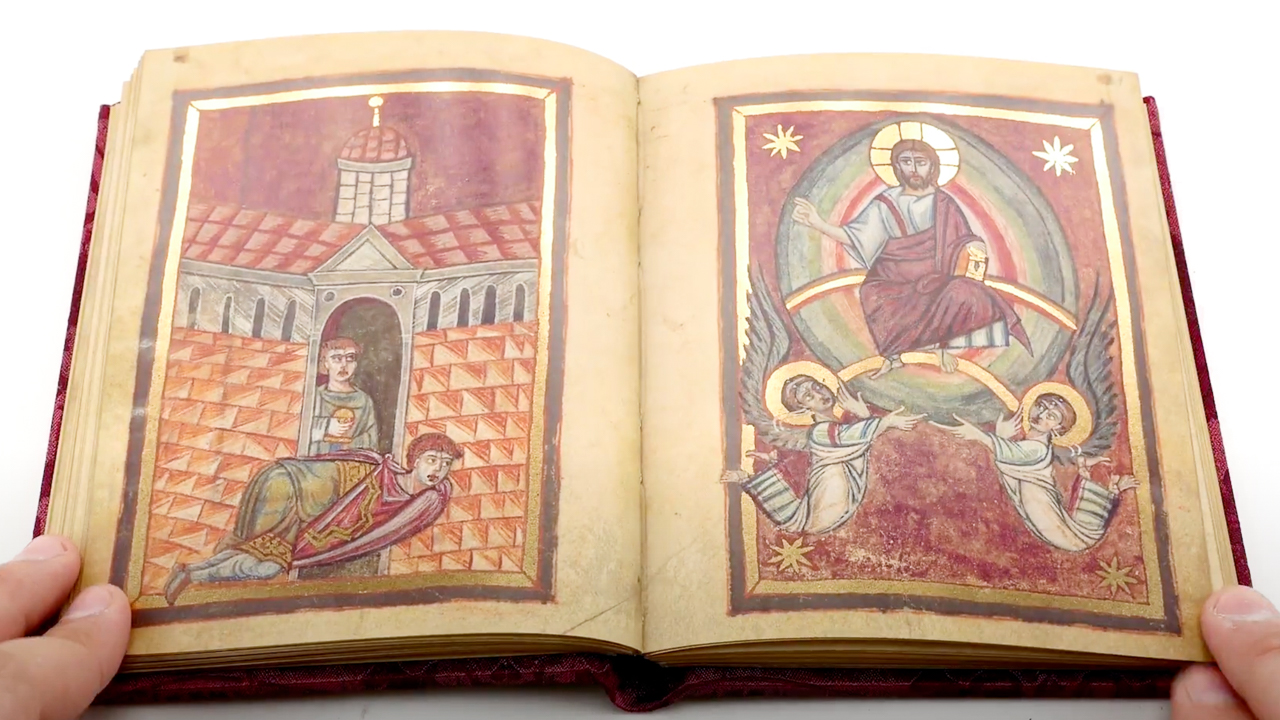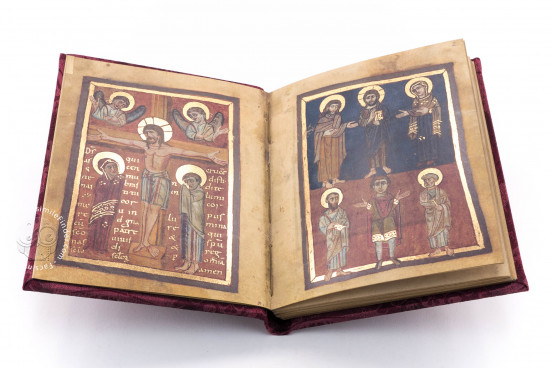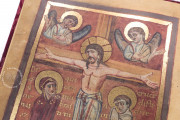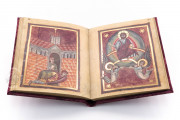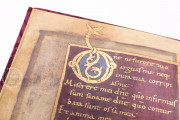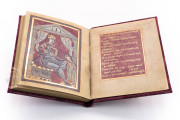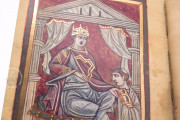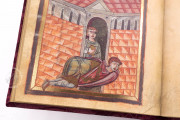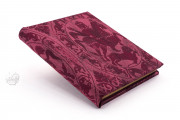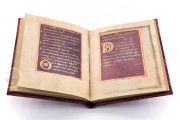The prayers of the Royal Prayer Book for Otto III were compiled and personalized for an heir to the title of emperor. It was probably made in Mainz at the behest of Archbishop Willigis between 983—when the four-year-old Otto's father, Otto II, died—and 996 when the young Otto was crowned Holy Roman Emperor. Written entirely in gold ink on purple-painted parchment, the small volume contains the Penitential Psalms, a litany, and an assortment of prayers such as those for the mornings and for entering and leaving church. It features five full-page miniatures and twenty-five elaborate decorated initials and an abundance of gold leaf and vibrant colors.
The prayer book, a book for the private devotional use of a Christian prince who was to become emperor, is an extremely rare survival that imparts intimate insight into the private prayer of a ruler.
Instructing Royal Piety
Three of the five miniatures in the manuscript show the intended recipient, who is the clear focus of the pictorial cycle. The manuscript opens with a pair of miniatures: the Crucifixion on the left and a two-tiered composition on the right (fols. 1v-2r). The young royal appears in the lower register, dressed in a purple chlamys and flanked by Saints Peter and Paul. The king's prayer is directed to the group above: Christ holding a book flanked by Saint John the Baptist and the Virgin Mary. In the second pair of images, the same young man is shown kneeling before Christ enthroned on a double rainbow on the facing page (fols. 20v-21r).
The final image represents the dedication of the book. Here, the crowned and enthroned ruler receives a richly bound codex from a cleric kneeling before him (fol. 43v). Facing this image is a poem that opens: "Receive, o most admirable king of kings, this modest booklet so worthy of our veneration for you, which I have written in gold and decorated with various illustrations" (fol. 44r). The pictured cleric, therefore, should be understood to be an agent of Willigis, Archbishop of Mainz, who commissioned but surely did not "write" the manuscript.
Gold Script on Purple
The gold writing signals Otto's imperial aspirations. The script is Caroline Minuscule, with Rustic Capitals used for headings. Drawn in red on blue grounds, the first letter of each new prayer is composed of scrolling vines and leaves.
Made for the Young Otto III
Although the book was unquestionably made for the child Otto III, its subsequent medieval history is largely unknown. One moment, however, is recorded in a prayer written in the eleventh century by a pious woman named Duriswint, who may have had access to the book while living in one of the religious institutions connected to the Ottonian imperial family.
Formerly owned by Karl von Schönborn (1840-1908) and a part of the Schönbornsche Schloßbibliothek in Pommerfelden, the manuscript was acquired by the Bayerische Staatsbibliothek and the Bayerische Landesstiftung in 1994.
We have 1 facsimile edition of the manuscript "Royal Prayer Book for Otto III": Königsgebetbuch für Otto III facsimile edition, published by Faksimile Verlag, 2008
Request Info / Price
